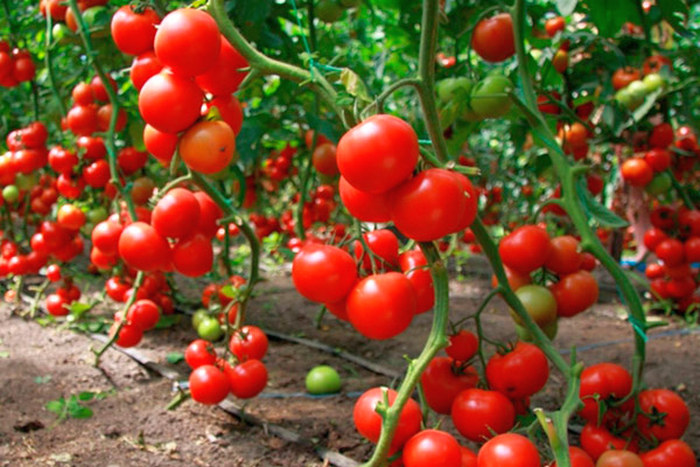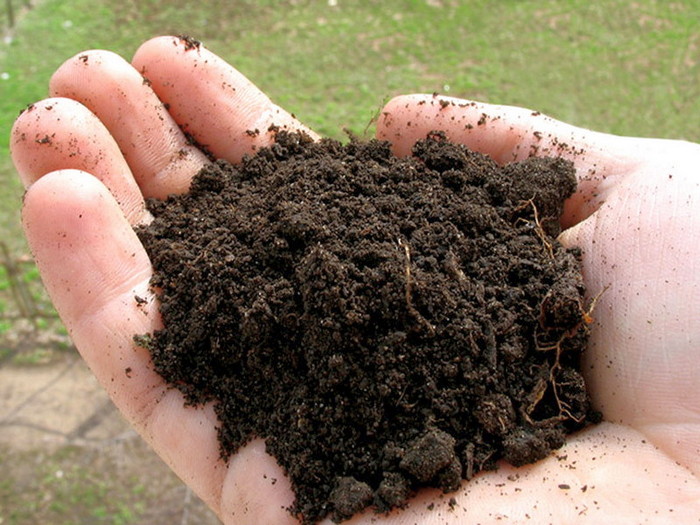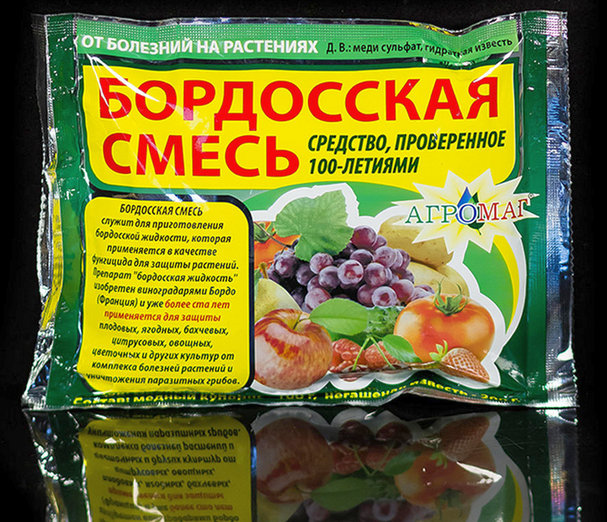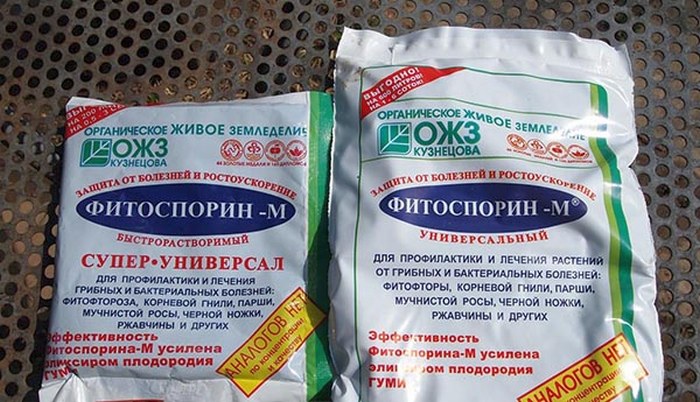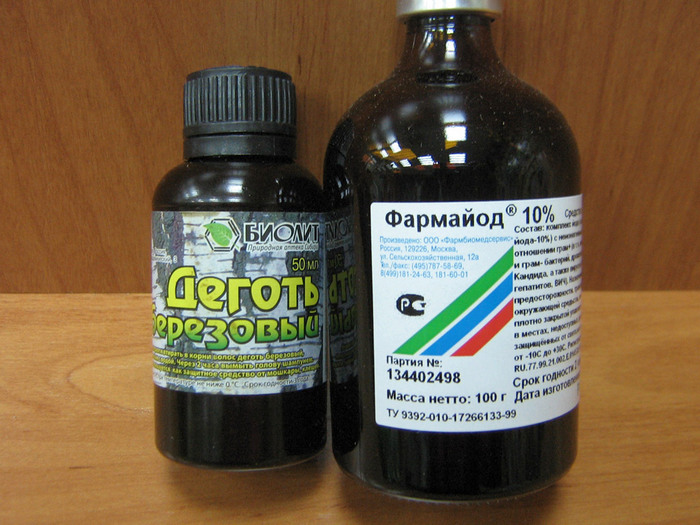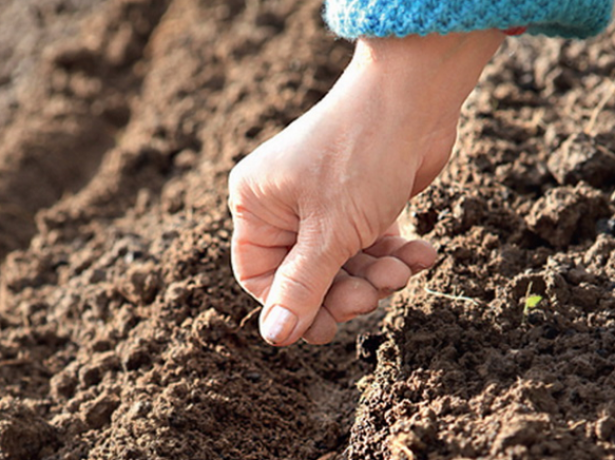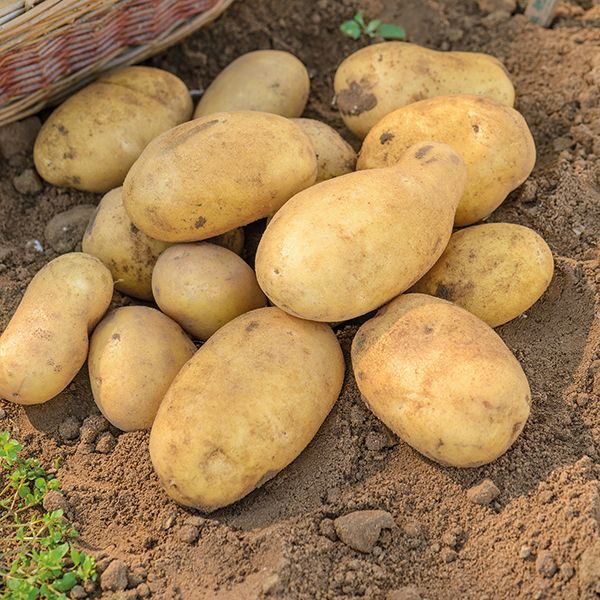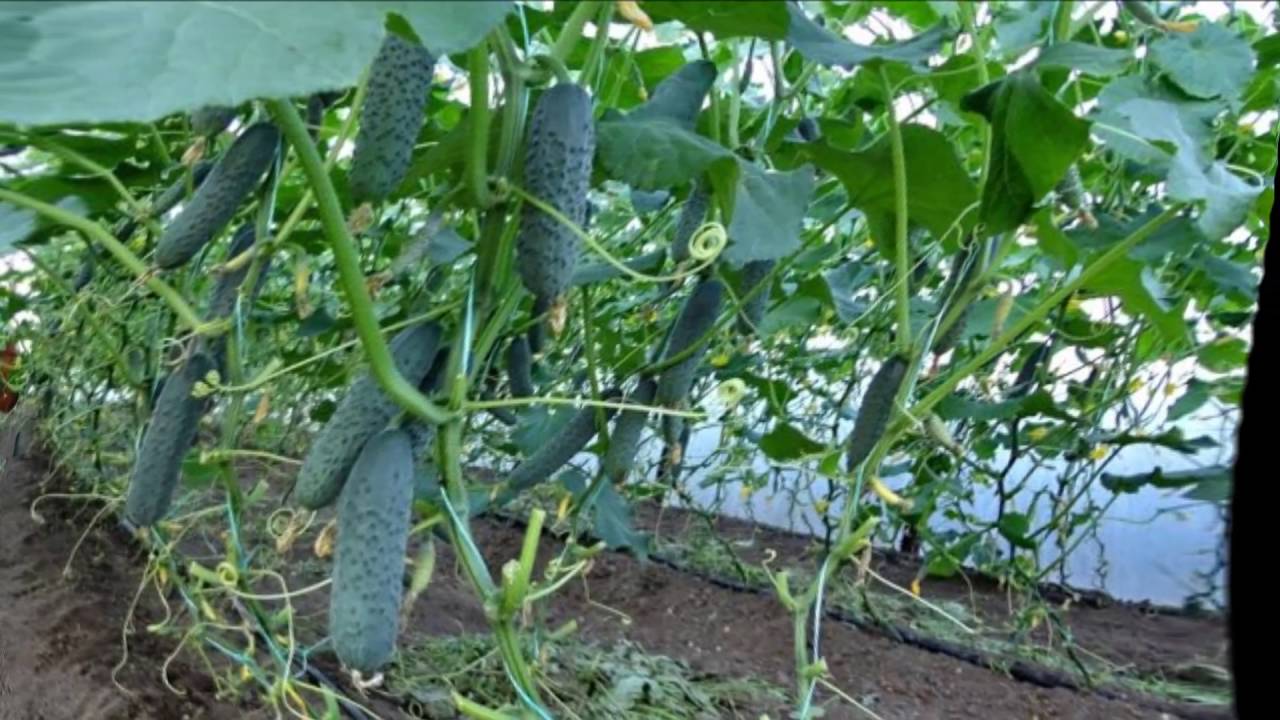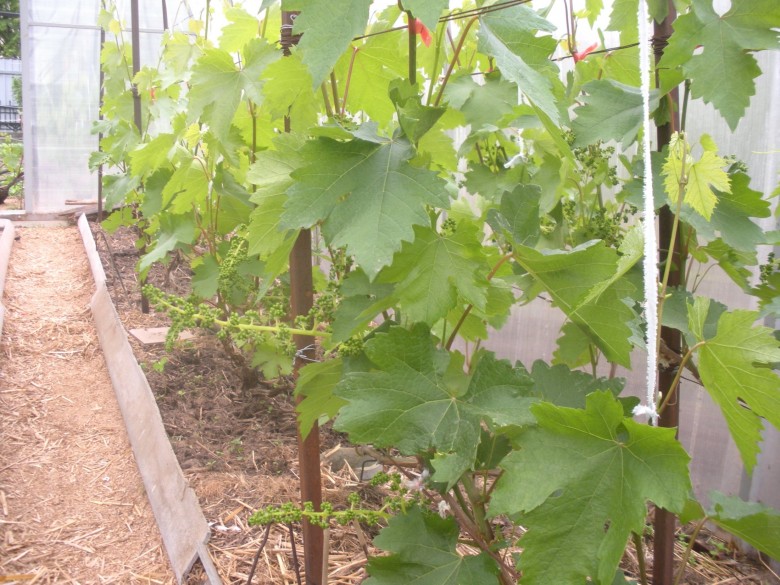Content:
It is not always possible to grow tomatoes in the open field. It is for this reason that some gardeners have adapted to cultivating this plant in a greenhouse and know certain nuances that allow them to get a good harvest of full-fledged fruits. Very important in this process is the preparation of the greenhouse in the spring for planting tomatoes. The health of plants and their yield largely depend on the correctness and timeliness of this procedure.
General information
The greenhouse tomato belongs to the Solanaceae genus and is a herbaceous plant. The root system is rod-shaped, well developed. The leaves of the tomato are odd-pinnate, sometimes strongly resembling potato leaves. The stem is erect or branched.
Tomatoes for growing in a greenhouse, depending on the variety, are also divided into types. Even experienced gardeners are confused about this classification. Stand out:
- Peruvian tomatoes;
- hairy tomatoes;
- ordinary tomatoes.
In order to choose the right variety for a greenhouse or greenhouse, you must know the main characteristics of the plant:
- bush height;
- determinant or indeterminate type;
- ripening dates of fruits;
- the versatility of using the harvested crop.
In addition, tomatoes can be designed for a summer or winter greenhouse. The quality and quantity of the future harvest depends on how correctly the variety is selected for specific conditions and requirements.
Greenhouse soil preparation
Preparing the soil in the greenhouse for tomatoes in the spring is critical in obtaining a bountiful, healthy and wholesome harvest. If there is no desire to poison plants with chemicals, then this issue should be given due attention. The soil is fertilized and fed even before the seedlings are planted in it, for example, when the greenhouse is just filled with fertile soil. Often the soil used to fill the greenhouse is imported. This is explained by the fact that fertile black soil is not present everywhere, therefore it often has to be purchased.
The professional recommends preparing and pre-cultivating the soil immediately after the last crop has been harvested. Fertilizers are best applied just in the first autumn days. During the winter, the soil will have time to fully recover and gain a supply of nutrients, which in the next season will be necessary for the growth and development of tomatoes.
The soil for tomatoes in the greenhouse begins to prepare with the fact that its top layer, 20 cm thick, is completely removed, and a ditch is dug for the length of the future garden bed. After that, the bed is covered with rotted manure (it is desirable that it be prepared for at least 3 years) without the presence of grass or hay in the composition, due to which the decomposition processes are significantly slowed down. Fertilizer should fill only half of the dug ditch, the rest of the top is covered with earth.In this way, the soil for tomatoes in your own greenhouse is the easiest to prepare, however, to get a large number of tasty fruits, you need to carry out some more activities.
The soil for planting tomatoes in the greenhouse helps fertilize and prepare earthworms. At first glance, their role seems insignificant, but it is they who qualitatively mix fertilizers with the ground. In addition, invertebrates are able to poop into the soil and thus apply the necessary organic fertilizers. Professionals call such humus. Before properly preparing the greenhouse in the spring for planting tomatoes, you need to collect a few earthworms and place them in a jar with good ventilation. They will need to subsequently be distributed over the territory of the future bed, digging small holes and putting invertebrates there, and then water the bed.
You can also prepare greenhouse soil for planting tomatoes using a special bacterial cocktail. It contains special bacteria that process nitrogen elements and saturate the soil with nitrogen. Growing a rich harvest after such a procedure becomes not such a difficult task.
How to treat the soil before planting a tomato in spring? As a rule, at the beginning of the new season there is a risk of fungal diseases in the greenhouse. To save the future harvest, you should treat the soil with Bordeaux mixture or copper sulfate solution. In addition, to prevent the earth from being acidic, a little lime or dolomite flour should be added. The same activities are carried out when planting tomatoes in open ground.
Before you make beds for tomatoes in your greenhouse, after a long winter, you need to water the soil with hot water. This procedure will help start the processes of its self-heating. It is better to start the spring season with the addition of biofuels, organic matter (fresh manure).
Tomatoes make high demands on the composition of the nutrient soil, so sand, peat, humus, fertilizer, rotted manure must be included there. Not only the soil composition is important, but also the temperature regime. That is why gardeners argue that the planting of tomatoes in a greenhouse should be carried out exclusively on elevated multi-layer beds. A layer of sawdust or straw is laid on the bottom, then about 10 cm of rotted manure, and fertile soil is poured on top. After that, the soil is treated with a solution of potassium permanganate and the ridges are covered with polyethylene for a couple of days.
Greenhouse processing before planting tomatoes
In spring, not only the soil needs preliminary preparation, but also the greenhouse itself. First of all, it is necessary to eliminate all residues of vegetation from the previous season, as well as nets, stakes and garters, and other auxiliary elements. The greenhouse frame is carefully examined for faulty parts, they are repaired and replaced. In some places it may be necessary to replace glass or polycarbonate.
Before the seedlings are planted, the greenhouse is washed with a soap solution and then rinsed with clean water. All joints must be airtight, in no case should drafts be allowed. For disinfection, a solution of bleach is also often used, which is prepared from a bucket of water and 0.4 kg of powder, and then infused for 4 hours. The whole structure is treated with the resulting substance. In order to prevent the occurrence of diseases, the greenhouse can also be treated with sulfur. In this case, the room must be hermetically closed, and the inner space must be fumigated with a special sulfuric checker.
The final stage of preparation
Before you plant tomatoes in the greenhouse, you need to make sure that the soil there is already warm enough, loose and fertile, and also has good water permeability. If necessary, add the necessary components, dig up and cover. The required size of the beds is selected individually, but often the proportions are as follows: height - 35 cm, width - 70 cm, distance between planting sites - 55 cm.A week before the tomato is planted on the garden bed, the final stage of preparatory work should be carried out. For this, the land is treated with Fitosporin or another similar agent.
Diseases and pests of tomatoes in the greenhouse
Even if you plant tomatoes in a thoroughly disinfected and disinfected greenhouse, there is still a certain risk of pests and diseases. In a greenhouse, as well as in an open field, plants can be subject to the following diseases:
- late blight;
- brown spotting;
- mosaic;
- rot;
- cracking of the fruit.
Of the pests, crops most often affect:
- spider mite;
- whitefly;
- gnawing scoop;
- wireworm;
- rootworm nematode;
- bear.
To prevent late blight, you need to carefully monitor the humidity, regularly ventilate the room and prevent sudden temperature changes. At the first signs of the onset of the disease, it is worth using biological agents or using traditional methods.
In order to prevent brown spot during the growing season, tomatoes are sprayed with Fitosporin. It is also used to prevent the appearance of gray, brown, brown and apical rot. Farmayod or a solution of ordinary iodine will help to cope with the mosaic. All plants with obvious signs of disease are immediately removed along with the soil clod.
Moderate timely watering will save not only from cracking the fruit, but also from the appearance of such an unwanted guest as a spider mite. You also need to constantly remove weeds, loosen the soil under the tomatoes, and remove damaged parts of plants. At the first signs of a whitefly appearing in the greenhouse, it is worth treating the tomatoes with Phosbecid or Citcor.
The gnawing scoop is very dangerous for tomatoes. They fight it by deep digging the soil, manually collecting and removing caterpillars, as well as spraying with the biological preparation Strela. There are also folk remedies for controlling this insect.
Constantly when digging the soil, it is necessary to destroy the wireworm. A few days before the tomatoes are planted in the greenhouse, vegetables strung on a stick (beets, potatoes or carrots) are buried in the beds. After a certain time, the traps are taken out of the ground and burned. With a massive invasion of a pest, you can use the drug Bazudin. Also, the wireworm does not like liming the soil and applying mineral fertilizers to it.
In the fight against rootworm nematode, not only deep digging of the soil with the obligatory removal of the top layer is effective, but also the use of the drug Glyokladin, Ekogel. If mass appearance of nematodes is observed, then it is advisable to use Basamil.
Most of all reasons for concern, both in the open field and in the greenhouse, are the bear. The polyphagous pest affects the root system of not only tomatoes, but also other crops. He likes well-moistened soils, so he cannot be zealous with watering a tomato. At the first signs of the appearance of an insect, tincture of hot pepper is poured into each of its holes, or granular preparations for special purposes are used.
To grow tomatoes in a greenhouse, you need to really love farming. After all, this is not an easy occupation and requires a certain skill, skills and theoretical knowledge. One must be able not only to properly and timely prepare the soil, but also to take care of the structure itself, monitor its integrity, and disinfect it. The fruits grown with their own hands in greenhouse conditions, contrary to popular belief, have a characteristic tomato taste and high market indicators.To get a rich and healthy harvest, you need to make some efforts, but they are fully justified.
